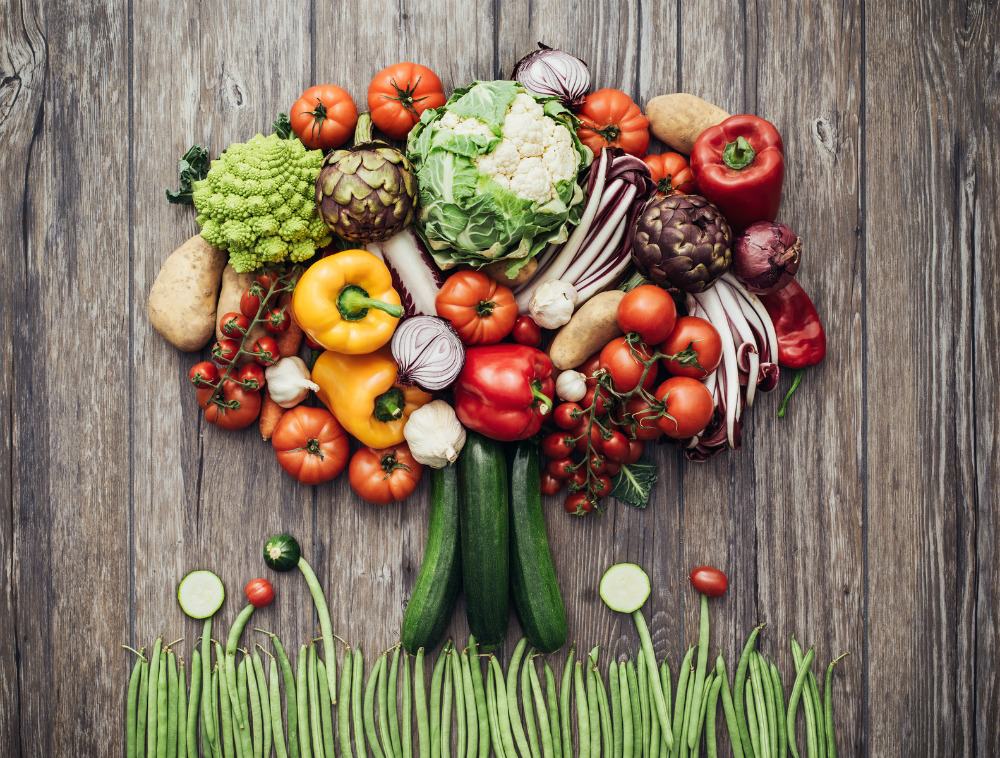Table of Contents[Hide][Show]
- Step 1: Say NO to processed, refined, and artificial foods
- Step 2: Eliminate The White Stuff, yes I mean refined/processed sugar
- Step 3: Here’s an easy step–use sea salt
- Step 4: Check out your farmer’s market
- Step 5: Eat more butter, fats, and oils
- Step 6: Your new GO TO food: homemade bone broth
- Step 7: McFast Foods
- About the Author
 Do you want to eat more nourishing foods? Have you heard about the value of traditional foods and their preparation?
Do you want to eat more nourishing foods? Have you heard about the value of traditional foods and their preparation?
Maybe you’ve heard Sally Fallon Morell speak or you’ve read Nourishing Traditions. Has this blog,The Healthy Home Economist, piqued your interest, and are you ready to take the plunge?
Where to begin?? Not to worry. I will help you get started with some straightforward “baby” steps–and you can even decide which step will be your first. It’s your decision. Here we go.
Step 1: Say NO to processed, refined, and artificial foods
Start reading those labels, especially the list of ingredients. Consider this: what kinds of processing have been done to the product you want to buy in order to get it into the form it is in now? Do you still want it? Your goal is to eliminate additives, artificial sweeteners, etc., as much as possible. A great way to make shopping easy is to take your WAPF Yearly Shopping Guide with you.
Step 2: Eliminate The White Stuff, yes I mean refined/processed sugar
We are addicted to this tasty poison. Think of this step as a food adventure into local raw honey, pure maple syrup, and other natural sweeteners like coconut, dates, and carrots. Lots of great recipes use natural sweeteners.
Time to get off refined sugar for good!
How about considering fruit as your new dessert? A baked spiced apple with a big dollop of homemade créme fraiche sounds pretty yummy, right? And, yes, there are really good sweets with no high fructose corn syrup or artificial sweeteners.
Step 3: Here’s an easy step–use sea salt
You get more minerals by eating unrefined salts from the sea or salt flats. Color is good–even pink, black, or gray. Bright white usually indicates a no no because it is refined and processed. Avoid iodized salt and MSG as much as possible.
You’ve already taken three easy steps. Good for you!
Step 4: Check out your farmer’s market
This is a great way for your family and friends to join in your new lifestyle. The Local Harvest website makes it very easy to find fresh and sustainably grown produce. Don’t be afraid to ask questions of the vendors. You can also join a CSA (community-supported agriculture) group.
If you don’t have a farmer’s market nearby, choose the pesticide-free or organic produce or buy dried or frozen organic fruits and vegetables. Remember to read those labels! If you are concerned about cost, use the Environmental Working Group’s Dirty Dozen and its Clean 15 List to determine your “must avoids” and alternatives.
Step 5: Eat more butter, fats, and oils
Say hello to butter and goodbye to canola. If you are used to low-fat foods, you’ll want to add good fats back into your diet slowly–or work with a nutritional therapy practitioner. Start converting your favorite recipes to good fats like unrefined extra virgin coconut oil, raw pastured butter, or unrefined extra virgin olive oil.
Step 6: Your new GO TO food: homemade bone broth
This is a must. It also tastes better than store bought, and it’s a financial win win. After you roast a chicken, use the bones to make broth. Work toward having a supply of broth in your freezer.
Here’s a great recipe for beef stock to try. Not only is broth comforting when you’re sick or tired, but it is also a great base for many quick meals, soups, one-pot dinners, gravies, and sautéing. Not ready to take this step? Then make sure your store-bought stock has no additives or MSG.
Step 7: McFast Foods
We all get the munchies some time. To help make better food choices, have on hand fast and easy foods that you or your small ones can grab and go: hard-boiled eggs, carrot/celery sticks, homemade trail mix, hummus, yogurt, cheese, and fermented veggies.
If you know you’re not going to have time to make dinner, set up a slow cooker in the morning for one-pot meals like soup, beans, stew, and meats. In fact, try Nourishing Days’ sprouted lentil soup or Kelly the Kitchen Kop’s beef stroganoff.
The key to your transition it to take it slowly–just one step at a time. Yes, it might take a little time but–before you know it–you will have taken major steps to a more traditional foods way of life with a smile on your face, money in your pocket, and a healthier YOU!
Congratulations–you’ve brought it home! For more steps and other tips, go to Traditional Foods Coach and sign up to receive your one-page guide: Steps to a Traditional Foods Way of Life.
About the Author
 Jennifer McManamee is a Traditional Foods Coach and the Chicago Chapter Leader for the Weston A. Price Foundation.
Jennifer McManamee is a Traditional Foods Coach and the Chicago Chapter Leader for the Weston A. Price Foundation.
Be sure to visit her website to sign up to receive your free one page guide for Steps to a Traditional Foods Way of Life.








Thanks for huge information shared, have a nice day..
ps. Small side note: Tomorrow (wed) is the very first posting for our Fresh Foods Link Up! Come share your CSA collections, farmer’s market treasures, home grown/raised hauls, and/or any seasonal recipes or DIY projects or tutorials! We’ve got a way for bloggers AND blog readers to participate!
great post darling! i especially like the farmer’s market suggestion. it’s one of the few ways to really find out how and where and by whom your food is being grown/raised – small scale, organic, seasonal, pastured.. it’s great! of course, none of this stuff is a given, but like you said – talk to the vendors! and if you’re lucky, you can still have the convenience of getting your veggies, fruit, bread, eggs, meat, and dairy in one place!
Great tips! We have made some of these changes over the past two years, and this gives us some good ‘next steps.’
Nice tips, however, please do NOT recommend raw fruit for dessert! Fruit is cleansing and is meant to digest quickly. Eating fruit on top of a meal defeats the purpose of eating fruit and can lead to many digestive disturbances. Ayurveda says to only eat raw fruit alone.
What about Amy frozen organic dinners?
I suggest reading the list of ingredients. Less is always better.
So no Splenda then?
Splenda is considered an artificial sweetener. I would suggest considering green stevia leaves or powder instead.